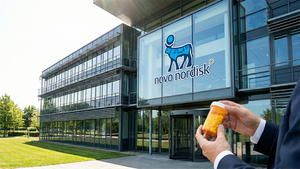Secure Certificate: Everything You Need to Know About Website Security
In today’s digital age, online security is one of the biggest concerns for businesses and individuals alike. Every time a user visits a website, they expect their data to be protected from hackers and cybercriminals. This is where a secure certificate (commonly known as an SSL/TLS certificate) plays a critical role.
A secure certificate ensures that communication between a website and its visitors is encrypted and safe. Without it, sensitive information such as login credentials, credit card details, and personal data could be intercepted by attackers. In this article, we will explore what a secure certificate is, how it works, its benefits, costs, and how to obtain the right one for your website.
What is a Secure Certificate?
A secure certificate is a digital certificate issued by a Certificate Authority (CA) that authenticates the identity of a website and enables an encrypted connection using SSL/TLS protocols.
When a secure certificate is installed on a website:
- The website address changes from HTTP to HTTPS.
- A padlock icon appears in the browser’s address bar.
- Visitors are assured that their data is encrypted and transmitted securely.
This certificate acts like a digital passport for your website, proving its authenticity and ensuring safe communication.
Why is a Secure Certificate Important?
- Data Protection
- Encrypts sensitive data such as passwords, payment details, and personal information.
- Trust and Credibility
- Customers are more likely to trust websites with HTTPS and a padlock symbol.
- SEO Advantage
- Google uses HTTPS as a ranking factor, meaning websites with secure certificates perform better in search engine results.
- Prevents Security Warnings
- Without a secure certificate, browsers show warnings like “Not Secure,” which scares visitors away.
- Compliance
- Essential for businesses to meet GDPR, PCI DSS, and HIPAA compliance standards.
How Does a Secure Certificate Work?
A secure certificate relies on encryption and authentication:
- Encryption: Data exchanged between the browser and server is scrambled so only the intended recipient can read it.
- Authentication: The certificate verifies that the website is genuine and not an imposter.
- Data Integrity: Ensures that the transmitted information has not been altered or tampered with.
This process is handled through SSL/TLS handshake protocols, which happen within milliseconds when you connect to a secure website.
Types of Secure Certificates
Not all secure certificates are the same. Depending on your needs, you can choose from different types:
- Domain Validated (DV) Certificates
- Fastest and cheapest option
- Validates domain ownership only
- Suitable for blogs, portfolios, and small websites
- Organization Validated (OV) Certificates
- Validates both domain ownership and organization details
- Provides higher trust than DV
- Best for small to medium businesses
- Extended Validation (EV) Certificates
- Most trusted and secure certificate
- Displays the company name in the address bar
- Ideal for e-commerce stores, banks, and large enterprises
- Wildcard SSL Certificates
- Secures a domain and all its subdomains
- Great for businesses with multiple services under one domain
- Multi-Domain SSL Certificates
- Protects multiple different domains with a single certificate
- Perfect for agencies or enterprises with many websites
Cost of a Secure Certificate
The cost of a secure certificate varies depending on the validation level and provider:
- DV SSL Certificates: $10 – $50 per year
- OV SSL Certificates: $60 – $200 per year
- EV SSL Certificates: $150 – $600 per year
- Wildcard SSL Certificates: $50 – $400 per year
- Multi-Domain SSL Certificates: $70 – $500 per year
 While free certificates (like Let’s Encrypt) exist, they usually come with limited validity (90 days) and lack warranties or business validation. Paid secure certificates offer higher trust, longer validity, and customer support.
While free certificates (like Let’s Encrypt) exist, they usually come with limited validity (90 days) and lack warranties or business validation. Paid secure certificates offer higher trust, longer validity, and customer support.
How to Get a Secure Certificate
- Choose a Certificate Authority (CA) or Reseller
- Popular providers include Comodo (Sectigo), DigiCert, GeoTrust, RapidSSL, and Thawte.
- Select the Right Type of Certificate
- Match your needs: DV for blogs, EV for e-commerce, Wildcard for subdomains, etc.
- Generate a CSR (Certificate Signing Request)
- This is done on your hosting server.
- Complete Validation
- Depending on the type, you may need to verify domain ownership or submit business documents.
- Install the Certificate on Your Server
- Your hosting provider often assists with installation.
- Update Website Links to HTTPS
- Ensure all pages and assets load securely.
Benefits of Using a Secure Certificate
- Customer Trust: Users feel safe when sharing personal or financial information.
- Increased Sales: E-commerce stores with EV or OV certificates see fewer cart abandonments.
- Better SEO Rankings: Google prefers secure websites.
- Brand Reputation: Shows professionalism and commitment to security.
- Browser Compatibility: Works across all major browsers and mobile devices.
Common FAQs About Secure Certificates
- Do I really need a secure certificate?
Yes. Without HTTPS, your site may lose traffic, face SEO penalties, and discourage customers from engaging. - Are free secure certificates safe?
Yes, they use the same encryption, but they lack business validation, warranties, and long-term reliability. - Can I transfer my secure certificate to another domain?
No. Certificates are issued specifically for the domain name requested. - How long does it take to issue a secure certificate?
- DV SSL: Minutes to a few hours
- OV SSL: 1–3 business days
- EV SSL: 3–7 business days
- How often should I renew my certificate?
Most secure certificates last 1–2 years. Always renew before expiration to avoid downtime.
For more helpful blog posts like this one, visit the rest of our site, YearlyMagazine.
Conclusion
A secure certificate is more than just a technical requirement—it’s a cornerstone of trust, credibility, and online safety. Whether you run a personal blog, an online store, or a corporate website, securing your domain with the right SSL/TLS certificate is essential.
By investing in the right secure certificate, you:
- Protect user data
- Improve SEO rankings
- Build trust with customers
- Stay compliant with industry regulations
In a digital world full of cyber risks, securing your website is not optional—it’s mandatory. Don’t wait for a security breach to take action. Get your secure certificate today and ensure your website is safe, trusted, and ready to grow.
More News
View More




Recent Quotes
View MoreQuotes delayed at least 20 minutes.
By accessing this page, you agree to the Privacy Policy and Terms Of Service.